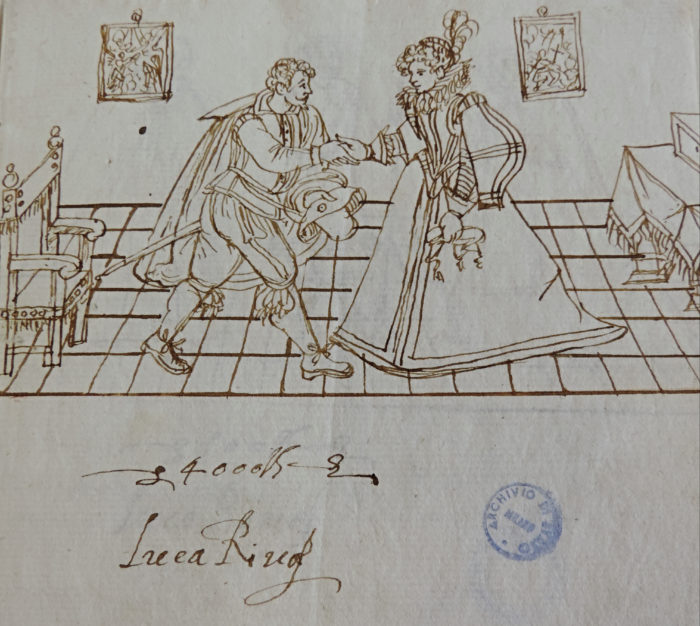
Luca Riva, Bequest to Laura Farina, brown-ink on paper. 1624. Archivio di Stato, Milan. (Photo Credit: Archivio di Stato di Milano).
The drawing illustrates the inheritance intended for Luca’s Riva wife Laura Farina whom he had married in 1617. Luca and his wife are portrayed in a room furnished with paintings, an elegant chair and a desk with a tablecloth. They are holding hands, dressed in elegant fashion, an indication of the family’s comfortable financial status. To Laura, Riva left 4000 lire, a sum that would allow her to live comfortably. Additionally, he returned the dowry, which amounted to 6000 lire. Laura inherited the bed and the objects conserved in the house including the paintings executed by her husband. Characterised by graceful gestures and careful detailing in the representation of the garments, Riva’s double-portrait is embedded in the naturalistic tradition of Lombard portraiture championed from the sixteenth century by Giovanni Battista Moroni, Sofonisba Anguissola and Fede Galizia. Following a well-established trope in the historical representation of the ‘double-portrait’, Riva draws himself in the act of joining hands with his wife. Recognised as dextrarum iunctio, this gesture draws comparisons with Rubens’ Honeysuckle Bower (Alte Pinakothek, Munich) and Van Eyck’s Arnolfini Portrait (National Gallery, London).